September 24, 2020
7 customer journeys examples for every lifecycle stage
Omnichannel customer journey orchestration is a modern approach to engaging customers with purposeful, data-driven experiences. Here are 7 examples of customer lifecycle journeys that can be activated quickly and easily using a Customer Data Platform (CDP) to drive acquisition, growth, and retention.
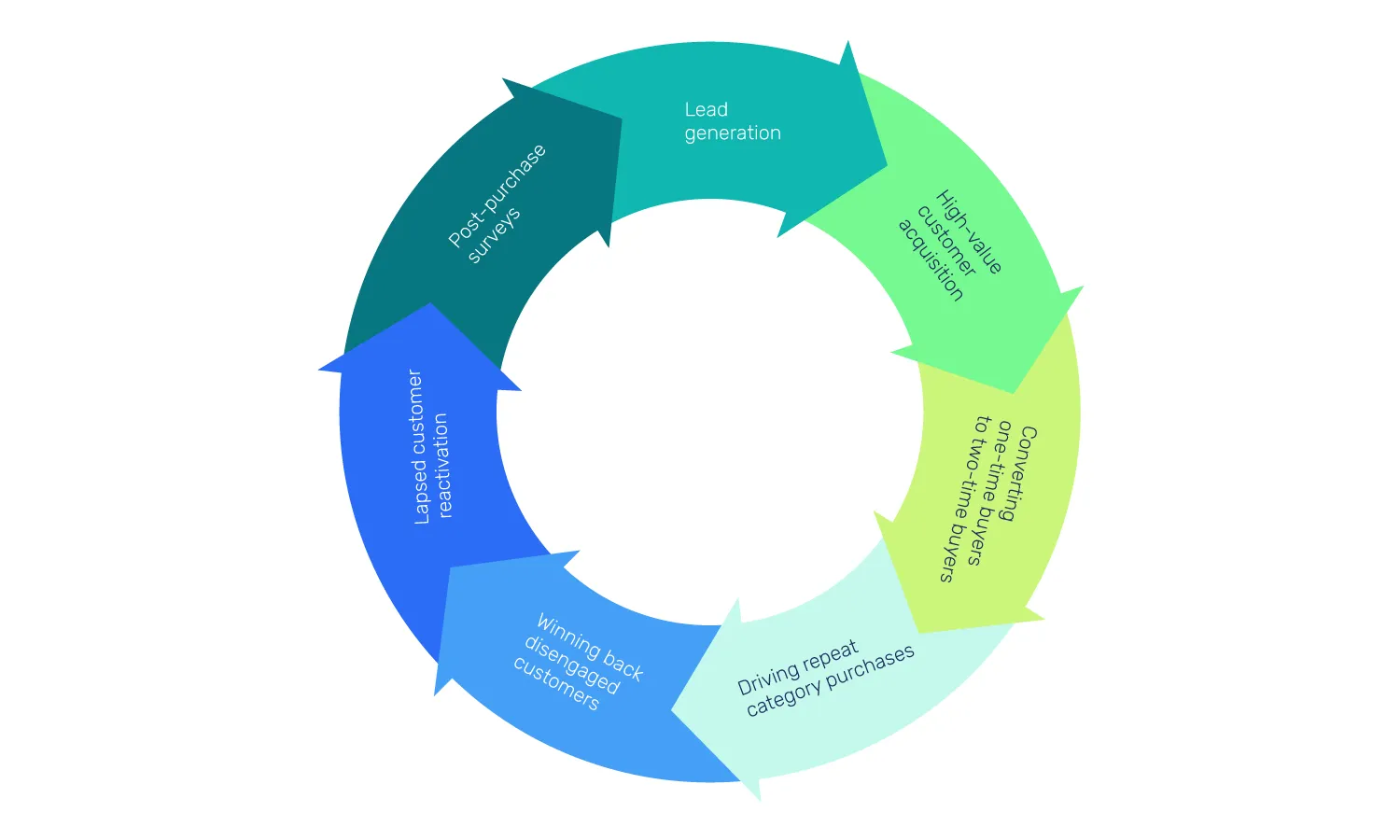
Virtually all Boards and CEOs have customer-centricity at the top of their business priorities list for 2020—and for good reason. In a world where digital dominates, consumer expectations are high, and competition is stiff, aligning your entire business around the customer is the only way to survive. The ever-increasing number of potential touchpoints makes implementing effective, omnichannel customer journeys seem challenging.
Don’t worry—it doesn’t have to be.
By using customer insights to inform your approach, you can ensure you’re engaging the right customers, with the right messages, at the right times, through the right channels for a maximum return. A Customer Data Platform (CDP) helps you unlock these insights to inform your customer journeys and activate those journeys all from one tool. This combination of automation and personalization helps the customer feel understood, valued, and engaged.
When you’re just getting started with customer journey orchestration, it’s easy to get ahead of yourself and try to build massively complex journeys right off the bat—but if you skip over these 7 foundational journeys, then you’re missing the opportunity to drive incredible process efficiencies and revenue growth at a low cost and effort to your team.
This playbook will walk you through the objectives, strategies, and examples for each of these campaign activations that can be immediately unlocked using a CDP:
- Lead generation
- High-value customer acquisition
- Converting one-time buyers to two-time buyers
- Driving repeat category purchases
- Winning back disengaged customers
- Lapsed customer reactivation
- Post-purchase surveys
7 omnichannel customer journey examples for every lifecycle stage
1. Lead generation
Lead generation can take many forms. At Lexer, our favorite high-powered lead generation strategy is targeted sweepstakes campaigns.
When done right, sweepstakes are one of the most effective approaches to lead generation, because they not only capture email sign-ups from high-quality prospects for future marketing but also serve the secondary purpose of re-engaging opted-out or disengaged email customers, all while driving quality traffic to your site.
The customer journey for a targeted sweepstakes campaign is as follows:
1. Identify your hero products for new customer acquisition and use this as the prize. Hero products are the products that people love to buy first and create future high CLV customers.
2. Build a lookalike audience of high-value customers who have previously purchased the hero product.
3. Target your lookalike audience and disengaged customers with an ad encouraging entries to win the hero product.
4. After clicking the ad, the prospect or customer is driven to a landing page where they can enter their email and fill out additional form questions regarding preferences, attitudes, and behaviors.
5. On submission of the entry, direct the prospect or customer to the product pages of the hero product.
6. After the entry period has concluded, notify the winners and trigger an email to the non-winners with a relevant offer encouraging conversions.
For example, this targeted sweepstakes campaign for climbing, skiing, and mountain brand Black Diamond uses the following creative:
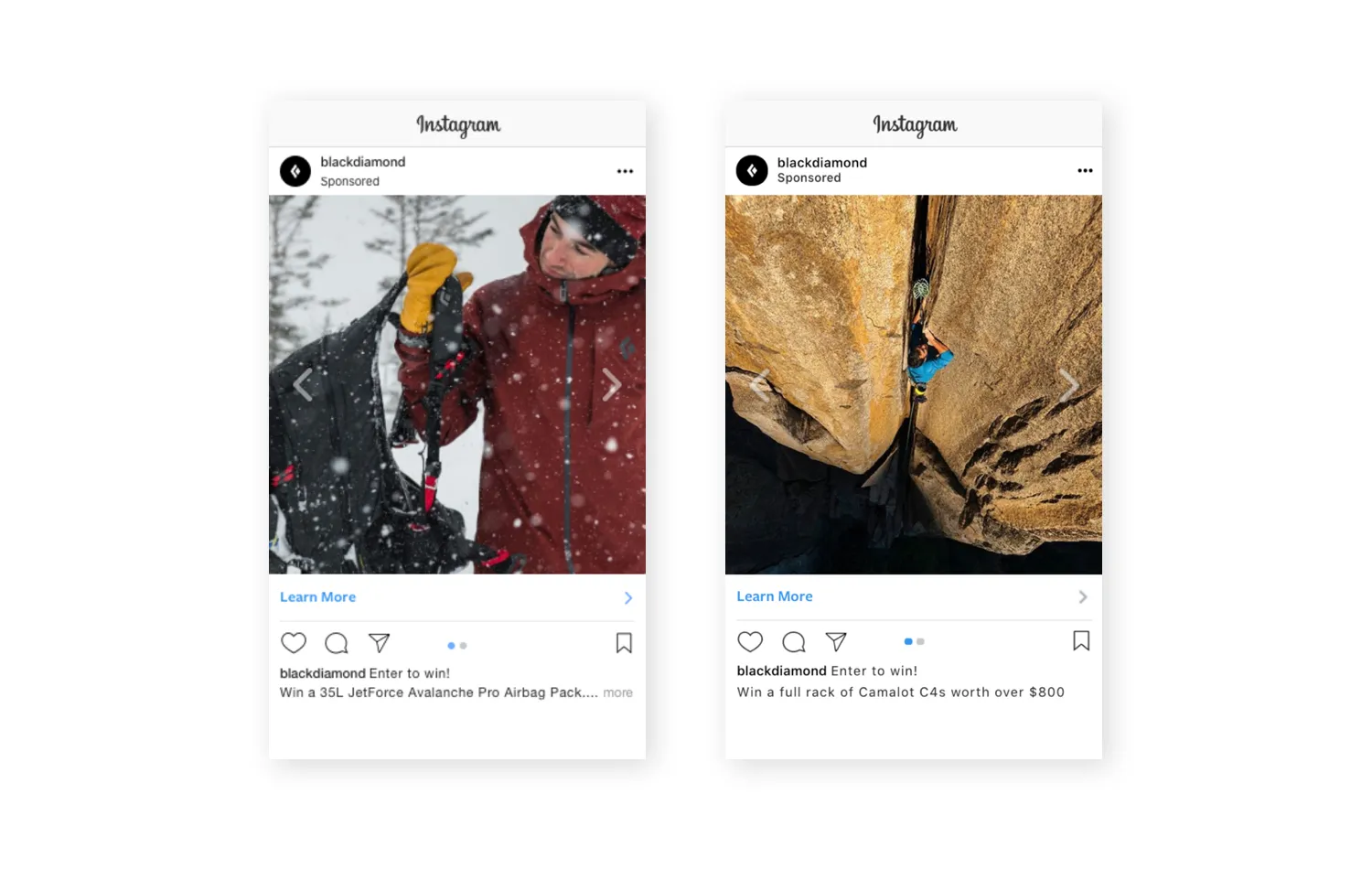
Prospects who clicked on the ad were driven to a campaign landing page with a form built using Lexer Secure Forms. The form included questions about preferences and behaviors, such as whether the respondent liked to ski, snowboard, or both, which helped Black Diamond understand key information about the new prospects being added to their database.
By building the form directly within the Lexer platform, we could immediately unify each response to individual customer profiles within the CDP, enriching Black Diamond’s database and enhancing their ability to draw customer insights. These insights also informed the follow-up emails sent to non-winners to help these new prospects and re-engaged customers feel heard, valued, and engaged.
The reason a journey like this is so effective is that the products, creative, messaging, audiences, and channels are informed by insights drawn from existing customer data. By understanding which product categories most frequently acquire high-value customers, suppressing current active customers to avoid wasteful ad spend, and contextualizing messages and offers to the audience, you can orchestrate powerful and relevant experiences at every step in the customer journey.
2. High-value customer acquisition
New, high-value customer acquisition is another customer journey that should always be running in the background of your marketing activities.
The journey for a high-value customer acquisition campaign is as follows:
1. Identify your hero products for customer acquisition and your highest-value customer audiences for each product.
2. Build high-value lookalike audiences from your high-value customer segments.
3. Target these lookalike audiences with personalized paid social ads featuring the hero product. Use messaging such as “products you’ll love” or emphasizing key features that appeal to the target audience’s lifestyle.
4. After clicking on the ad, direct the prospect to the relevant product page on your website.
5. Prospects who convert are enrolled in the one-to-two-time buyer journey in section 3.
6. Enrol customers who don’t immediately convert in your current retargeting activation. Facebook’s Dynamic Product Ads (DPA) perform very well here due to the level of personalization.
For example, these new customer acquisition ads by Mountain Khakis feature hero products as “outdoor lifestyle essentials:”
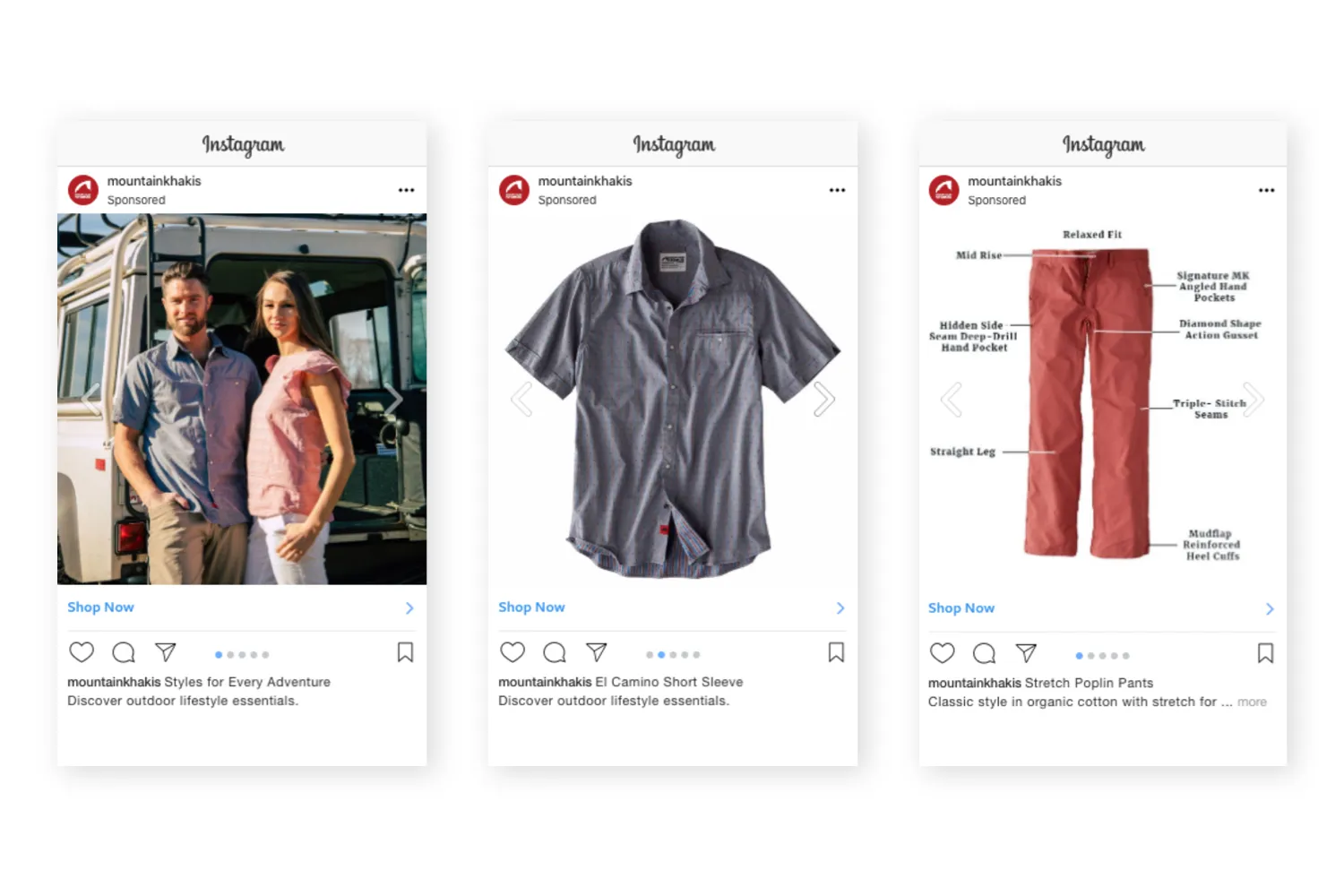
The success of a campaign like this hinges on your understanding of the customer. It’s not enough to simply know that your highest-value customers always convert first on denim, for example—you have to understand why they convert on denim, how the product fits into their lifestyles, and which messages resonate with them in order to contextualize the ad for clicks and conversions. Insights like these can only be discovered when your customer data has been combined, enriched, and unified into a single view of the customer.
3. Converting one-time buyers to two-time customers
The second sale—not the first—is the most important customer milestone toward developing a loyal, long-term relationship with your brand. Therefore, orchestrating a customer journey that turns one-time buyers into two-time buyers is key to growing the lifetime value of your newest customers.
The journey for driving a second order by recent first-time buyers is as follows:
1. Segment cohorts of customers based on the products in their first purchase. Within these cohorts, measure the conversion rate to second order, average time to second order, and the products most commonly purchased next.
2. Using these insights, identify the product journeys you need to automate and create the emails and paid ads featuring the products each cohort is most likely to purchase next.
3. Set up the audience automation so when a customer makes their first purchase, this updates the relevant first product purchased cohorts in email and Paid Social at the optimal time for the second purchase.
4. The customer will then receive the email or paid social ad featuring the relevant products at the right time.
5. After clicking on the ad, the customer is driven to the relevant product page on your website.
6. Enrol customers who don’t immediately convert in your current retargeting activation.
Because the audience for this journey has already engaged and purchased from your brand, you have some information about their interests to inform your messaging. Here are some examples from Adidas, Lord & Taylor, Everlane, and lemlem:
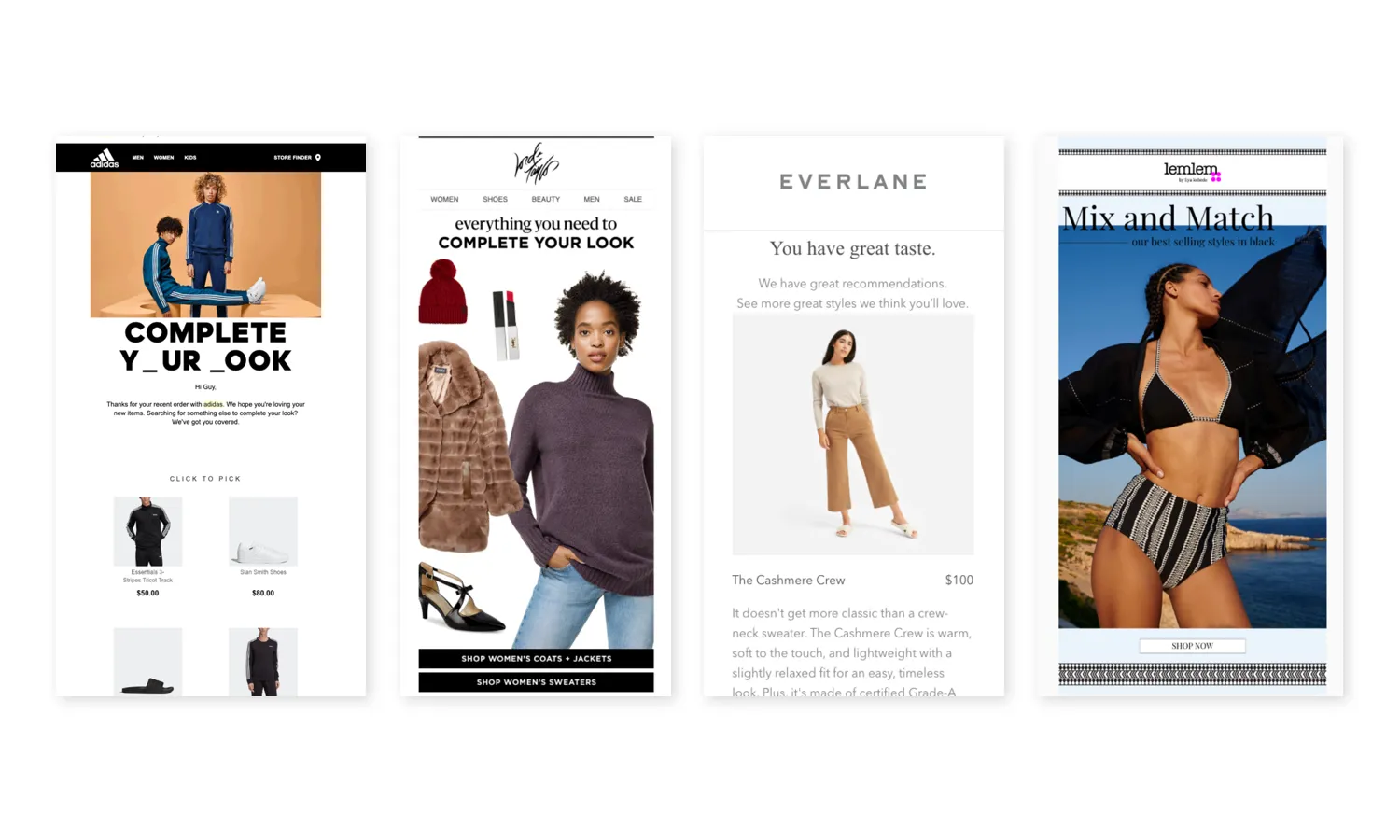
Timing is critical for this type of journey. If you serve your follow-up ads too soon after the customer’s first purchase, you risk irritating them with ad fatigue. If you serve them too late, however, the customer’s engagement and interest in your brand may have faded.
Using customer analytics tools powered by a CDP, you can analyze the buying patterns of high-value customers following their first purchase and understand the best times, products, messages, and channels for driving the second sale. These insights will help you orchestrate timely and targeted experiences that drive results.
4. Replenishment triggers
Some product categories, such as denim, underwear, or skincare, drive repeat purchases as the products wear down or run out and customers need to replace them. Likewise, some customers repeatedly purchase in the same category for new sizes, colors, or styles.
To drive repeat purchases of the same category and ultimately grow the lifetime value of your customer base, set up this customer journey as follows:
1. Identifying the products that are most commonly repurchased is your first task in selecting your replenishment journeys. Once you have found these products, you need to determine the average time between repurchases. Our recommendation is to focus on the time it takes for the first 50% of customers to repurchase.
2. Using these insights, create the emails and paid ads featuring the products within the replenishment category. Ensure that your messaging speaks well to the purchasing motivation of replenishment with something like “time to restock?” for products that run out periodically or “new colors you’ll love” for products that have updated styles.
3. Create segments of customers that last purchased the replenishment products in the desired time range and automate the send of these segments as audiences to email and Paid Social.
4. These customers will then be served an ad via email or paid social that showcases carousel images of the products with new colors or features.
5. After clicking on the ad, the customer is driven to the product category page on your website.
6. Enrol customers who don’t immediately convert in your current retargeting activation.
Here are some real-life examples of repeat category purchase campaigns:
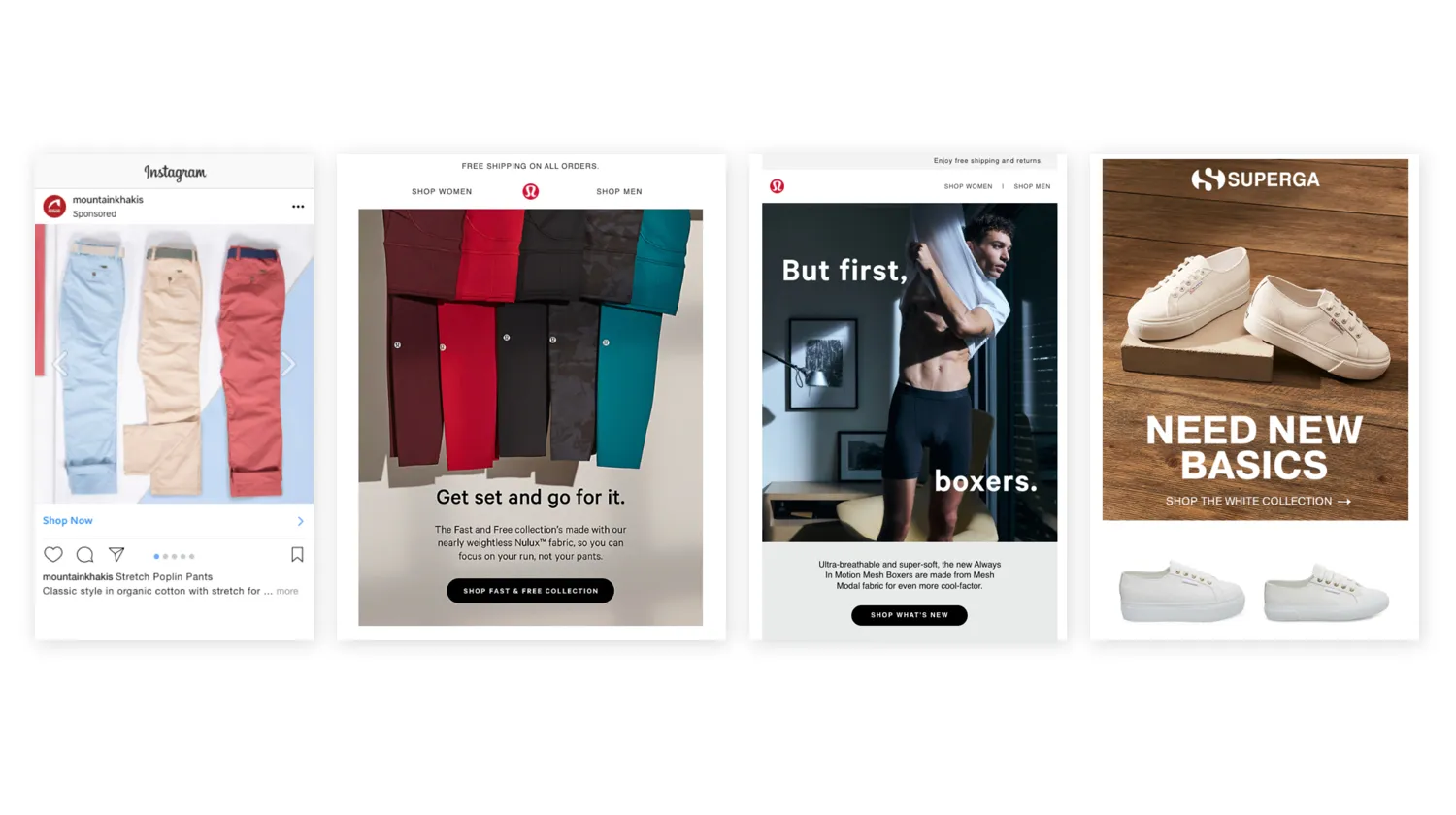
To set up this campaign effectively, you need to first dig into your customer data to understand which products stimulate replenishment purchasing and how much time passes between purchases. By using augmented NPS survey data to compare the motivations behind repurchasing for promoters and detractors, you can gain valuable insights that inform your approach to this journey.
A campaign like this can run indefinitely with suppression done at the audience level within a CDP like Lexer.
5. Winning back disengaged customers
Most customers do not suddenly churn or lose interest in your brand. Rather, they go through a cooling down period where they gradually pay you less attention or are lured away by other brands. Early identification of these signs of cooling down can allow you to take action and establish re-engagement journeys that promote retention and the growth of customer lifetime value.
The journey for a win-back campaign goes as follows:
1. Create segments of customers who have not opened emails or visited your website for a certain period of time—typically, three months—and then automate the send of these customers as an audience to Paid Social.
2. Trigger personalized campaigns to re-engage these customers before they’ve completely churned. Consider adjusting your messaging to be relevant and engaging. For example, you could offer them care instructions for the products they purchased, entries into sweepstake campaigns, or an email from the CEO or an influencer.
3. After clicking on the ad, the customer is driven to the homepage or featured product page on your website.
4. Enrol customers who don’t immediately convert in your current retargeting activation.
Here’s an example by JUSTCBD:
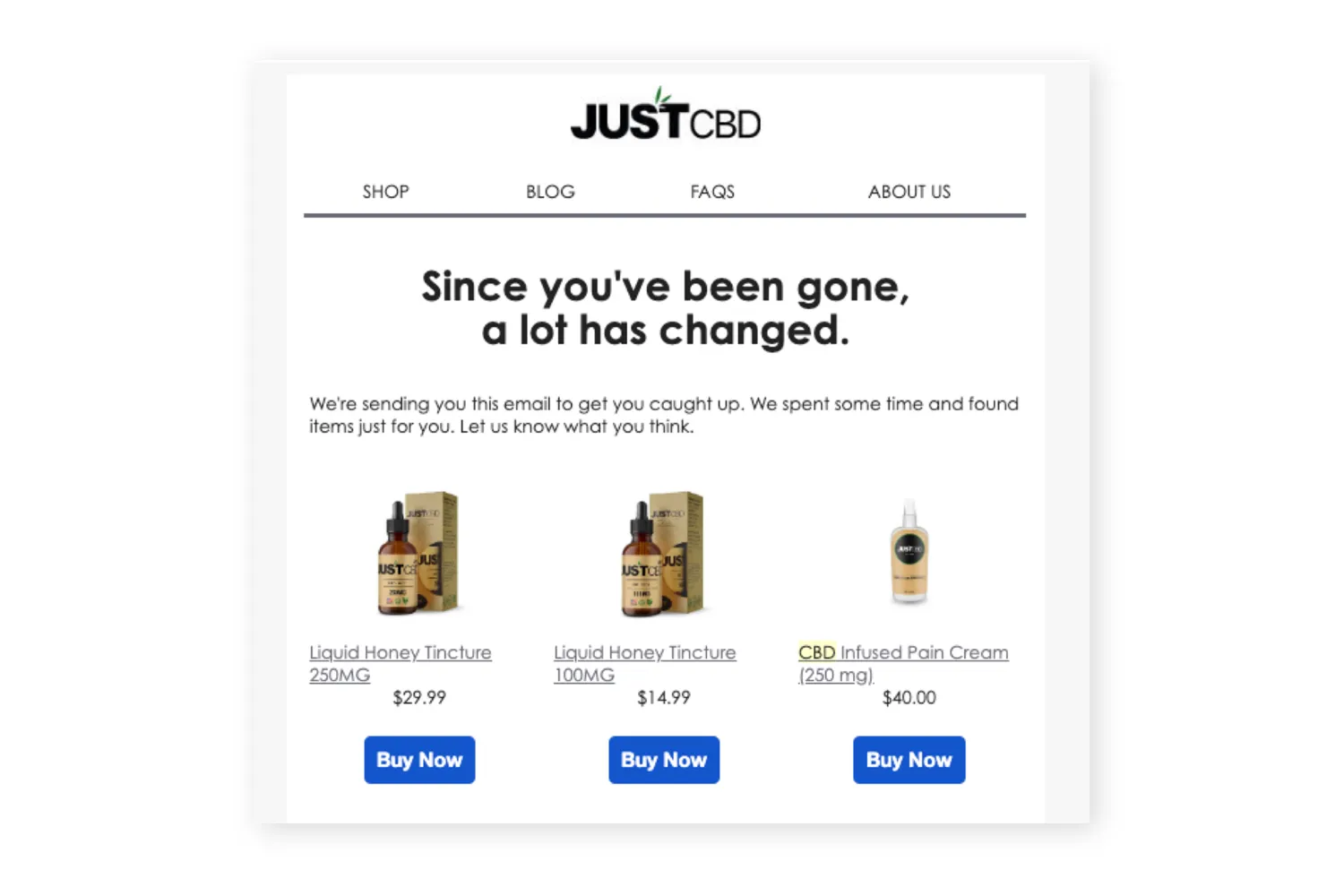
Often, marketers miss the opportunity to re-engage these customers before they’ve lapsed because they’re operating in siloed, channel-centric businesses where those in charge of email and those in charge of paid social are disconnected, uncommunicative, and using different data to inform their campaigns.
By using a CDP to connect, standardize, and enrich your data into a single view of the customer and then making that data available to every team, you can orchestrate omnichannel customer experiences that re-engage customers who might’ve otherwise been lost forever.
6. Lapsed customer reactivation
Lapsed customer reactivation campaigns are the final step in the customer lifecycle where you can attempt one last grand gesture to win your customer back. After this step, it’s best to preserve your budget, effort, and email deliverability score for new and existing customers.
To win back customers who have not purchased for a long duration and are getting close to churning, set up a customer journey as follows:
1. Dig into your data to analyze the churn timeline and understand the maximum disengagement time following a purchase for a customer to be considered officially churned. A CDP makes it easy to determine this timeline. Predictive analytics, such as Lexer’s churn risk model, provides this as an attribute on each individual customer profile.
2. Build automated journeys to trigger at the optimal time following a customer’s last purchase. For example, if you identified the maximum time from last purchase as 12 months, your campaign would trigger after 12 months of no purchases.
3. The customer is served an email or paid social ad with topical or seasonal creative and messages such as “come back” and “we miss you.” By including incentives such as a 20 percent discount, you can encourage another sale.
4. After clicking on the ad, the customer is driven to the homepage or featured product page on your website.
5. Enrol customers who don’t immediately convert in your current retargeting activation.
Here’s another example by Black Diamond:

As with each of these campaigns, it’s important to periodically revisit the performance of your reactivation journeys to understand where and how to optimize.
7. Post-Purchase Surveys
Whether it’s a customer’s first purchase or one-hundredth purchase with your brand, understanding their buying motivations, product satisfaction, and overall experience is key to improving future communications and growing your business.
To continue collecting data for better understanding and engagement, set up this post-purchase survey journey as follows:
1. Start by identifying the gaps in your customer data or consider the information you need to know to really engage your customers. These gaps will inform the questions you ask on your post-purchase surveys to help you build upon your current understanding of the customer.
2. Develop a survey with specific questions to collect the data you need. Lexer’s built-in form feature allows you to do this directly within the CDP and match each response as an attribute on individual customer profiles.
3. When the customer makes a purchase, this triggers the automated journey.
4. The customer is emailed a survey with questions regarding their preferences, motivations, satisfaction, and/or overall brand experience. To encourage survey responses, you might offer exclusive content, discounts, or other incentives in exchange for this information.
5. After filling out the survey, the customer is driven to the homepage or a relevant page on your website.
6. The customer is sent a thank-you email with the content, discount, or incentive you offered to encourage continued engagement.
This customer information, freely and proactively shared in exchange for more relevant brand interactions, is also known as zero-party data. Zero-party data helps improve the quality of your current data and therefore the accuracy of your customer insights, which ultimately drives more impactful engagement across the board.
For example, we helped the West Coast Eagles, winners of the 2018 Australian Football League Grand Final, develop initial and follow-up surveys to deliver actionable insights that improved both personalization efforts and the overall fan experience. Click here to learn more.
Effective customer journeys begin with holistic customer insights
Successful customer journey orchestration cannot take place with siloed data, uncommunicative teams, or a vague or outdated understanding of the customer. Before you can automate these key customer journeys, you need integrated retail systems, holistic customer data, and the ability to easily analyze and activate that data across teams and channels.
That’s why a CDP like Lexer, with a native form builder and the most comprehensive data enrichment in the industry, is a valuable tool for orchestrating these campaigns. Built for business users, not data scientists, our easy-to-use dashboards enable marketers to discover meaningful customer insights with no help from an analyst or external IT resource. These sophisticated insights allow you to automate incredibly powerful cross-channel campaigns that deliver personalized customer experiences at every touchpoint. With built-in tools for tracking change and measuring progress, you can monitor the performance of each campaign and adjust as needed for optimal results.
Interested in activating insight-driven customer journeys across every channel? Use the calendar to book a meeting and see how Lexer can help.
Speak with our retail experts

